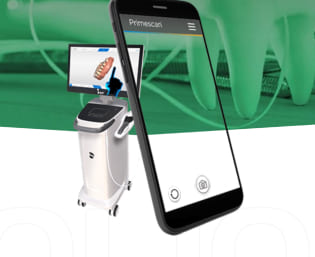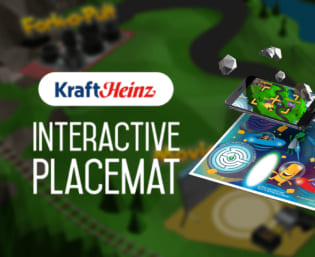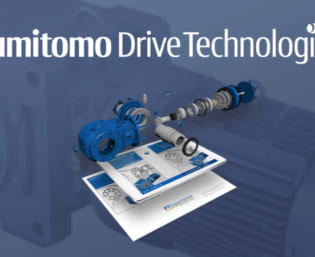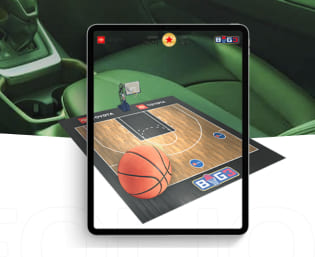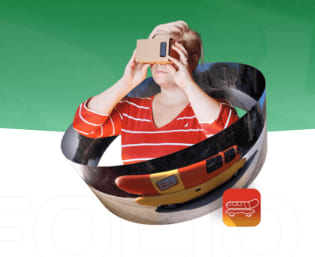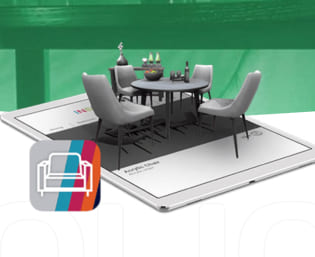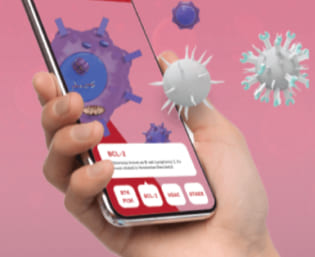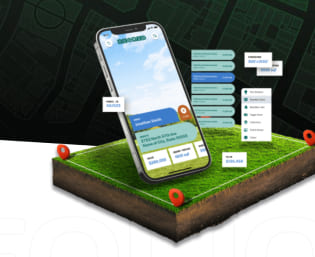Transforming the Construction
Industry With Augmented and Virtual Reality Solutions
SAFE TRAINING ENVIRONMENTS, FIX MACHINERY, AND VISUALIZE NEW DEVELOPMENTS WITH EASE
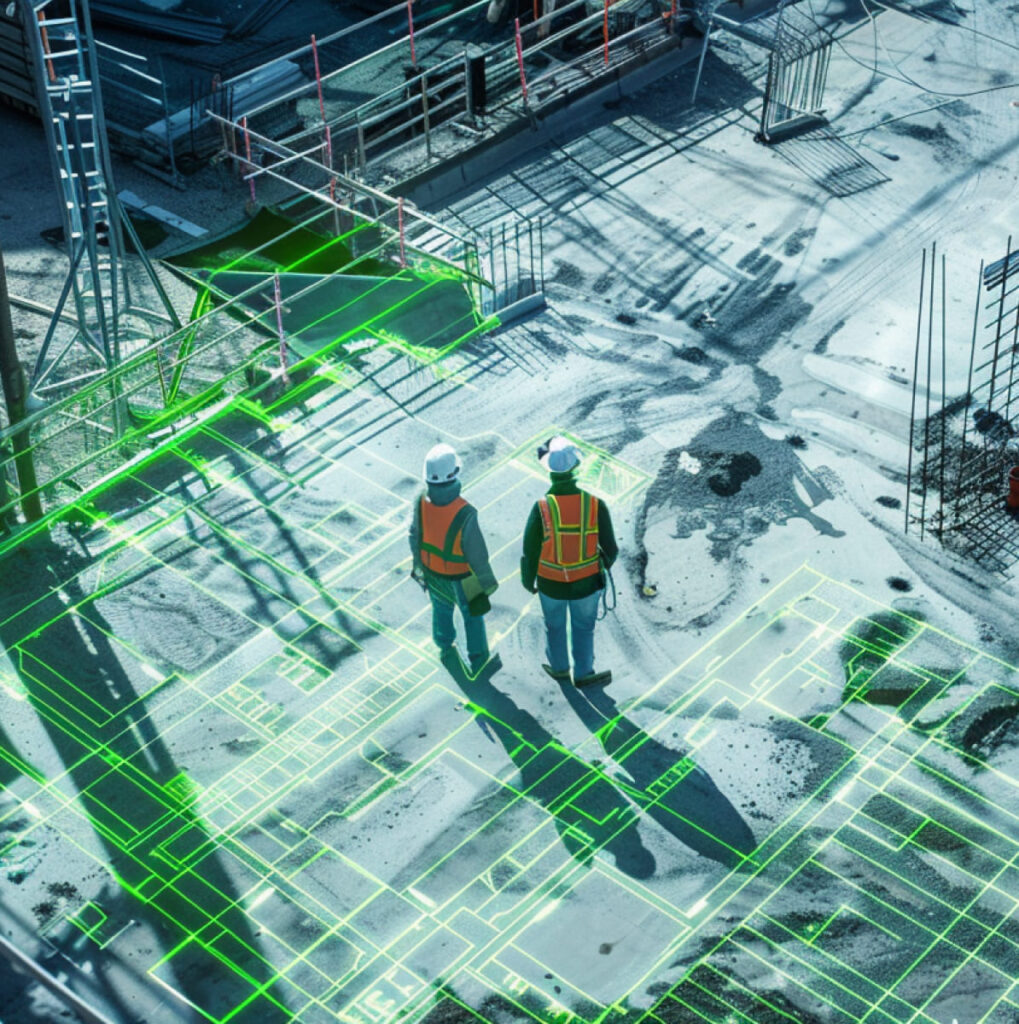
TRUSTED BY OVER 300 CLIENTS

THE NEXT UP AND COMING TECHNOLOGY
More Efficiency and Savings with Augmented and Virtual Reality
Discover how AR and VR can revolutionize the construction industry, reducing costs and improving productivity.
$90B
MARKET BY 2025
According to a report by the World Economic Forum, the Augmented Reality market in construction is expected to reach $90 billion by 2025.
90%
FASTER EMPLOYEE PERFORMANCE
According to Deloitte, AR & VR for your business cost-effective investment, saving businesses money by boosting productivity and skill aquisition
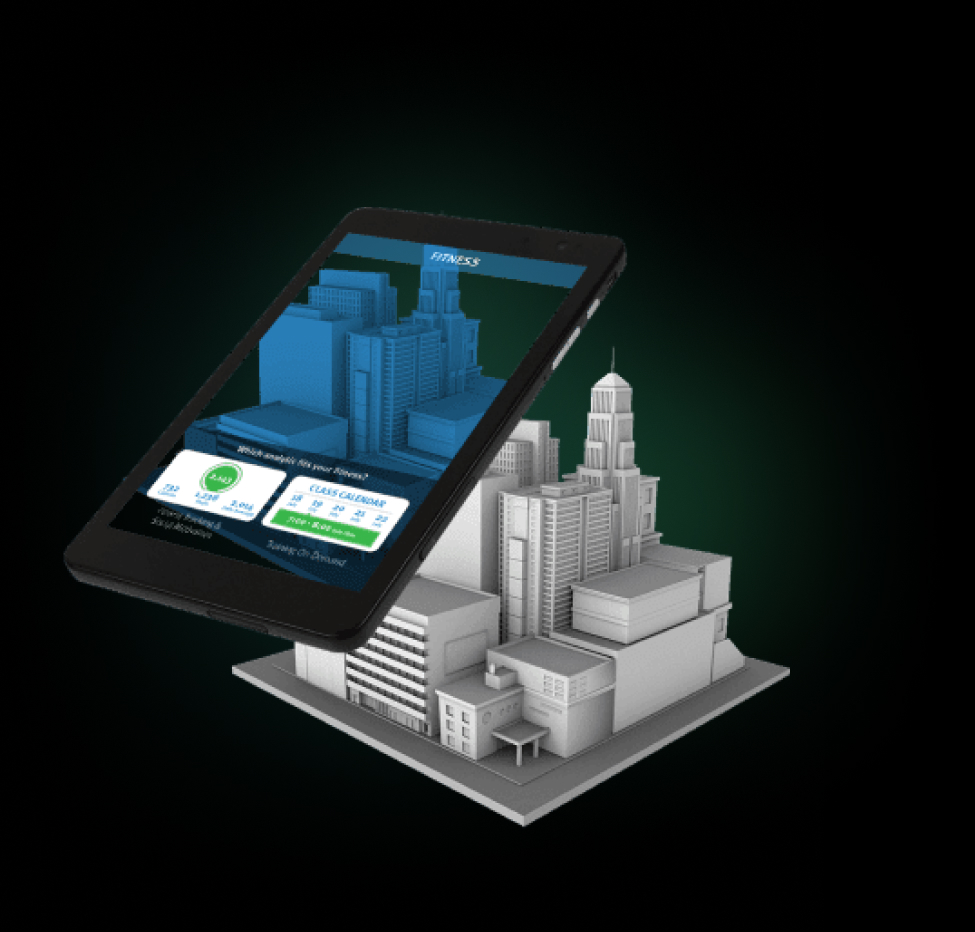
How AR & VR Are Collectively Solving Problems for the Construction Industry
Efficient On Site Management
Visualize project status, coordinate tasks, and resolve issues promptly, leading to improved project efficiency, collaboration, and productivity
Improved Safety Training
VR-based training modules can simulate various scenarios, such as working at heights or operating heavy machinery, allowing workers to develop essential skills, increase safety awareness, and reduce the likelihood of workplace accidents and injuries
Enhanced Design Visualization
By experiencing virtual models at a 1:1 scale, stakeholders can identify potential design flaws, optimize layouts, and make informed decisions early in the project lifecycle, ultimately reducing design errors and costly rework.


Optimize Your Business Workflow With a Custom
AR & VR Experience
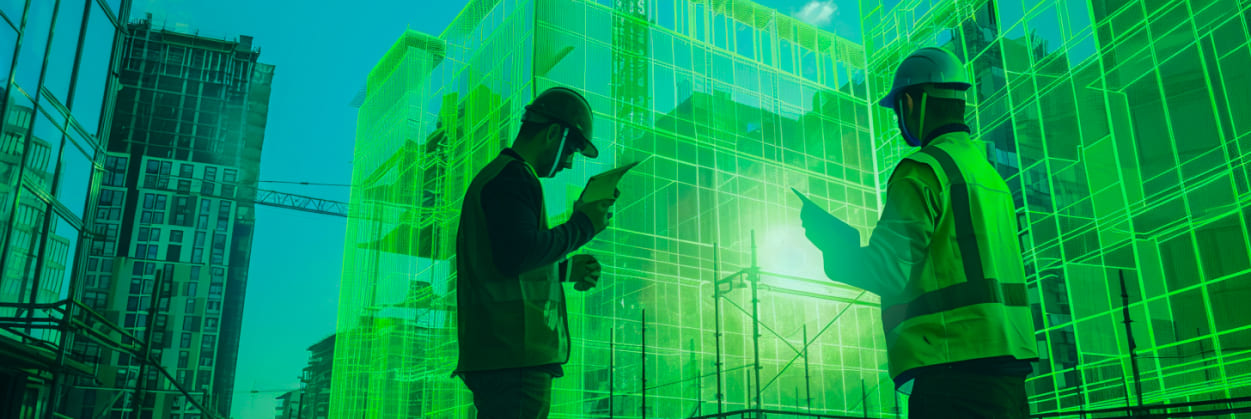
Effectively Visualize Project Plans with AR Technology
Augmented reality offers numerous advantages for the construction industry, including the ability to accurately map out building plans and visualize 3D maps on construction sites. By leveraging AR technology, construction professionals can streamline their processes, improve accuracy, and enhance communication.
WE LOVE CREATING EXPERIENCES THAT GENERATE REAL VALUE
Results Speak For Themselves

Brett Bawel
Program Manager at MindFuel

Working with the entire Gravity Jack team was an incredible experience. From the design and prototype stage, to the final delivery, the Gravity Jack team exceeded our expectations.

Jerry Paffendorf
CEO of Regrid

From the first exploratory conversation through project scoping and execution, the GJ team was great to work with at all levels… They took the time to listen, understand, and get excited about our unique business and AR opportunity. More than that, they executed beautifully.
GRAVITY JACK CLIENT BLOG GALLERY
Augmented & Virtual Reality
for the Medical Industry
Augmented Reality Tools For Project Planning
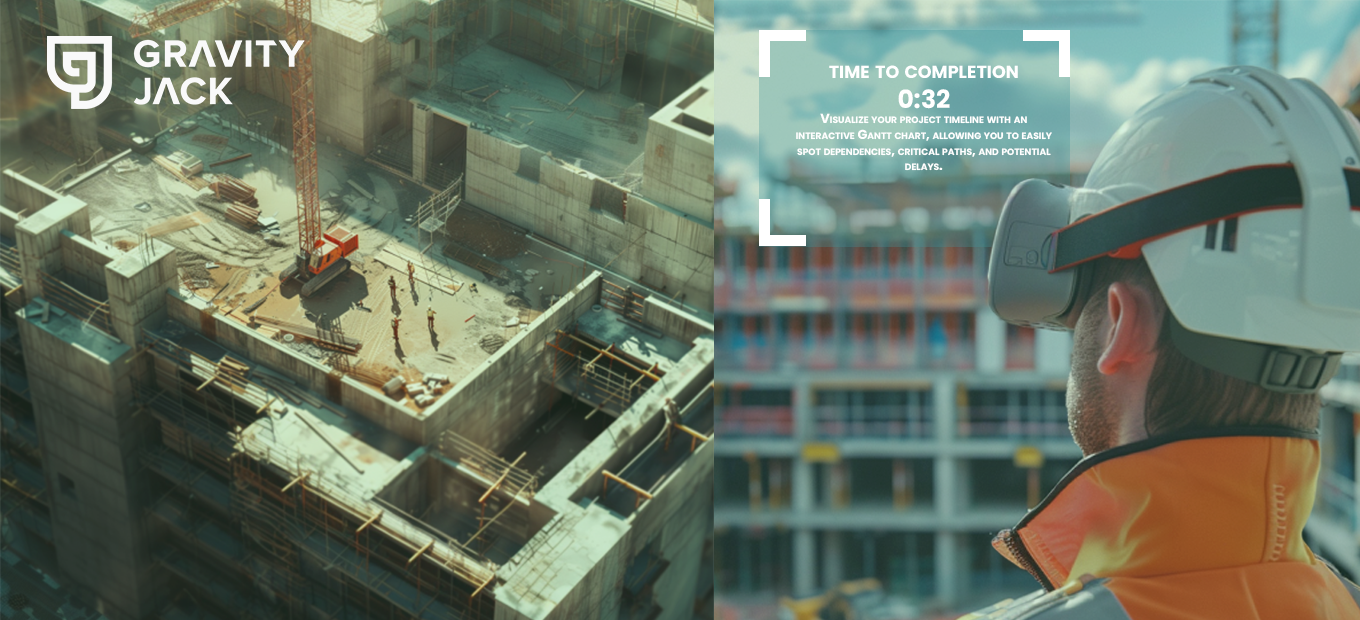
Augmented Reality: Managing Equipment Cost in Construction
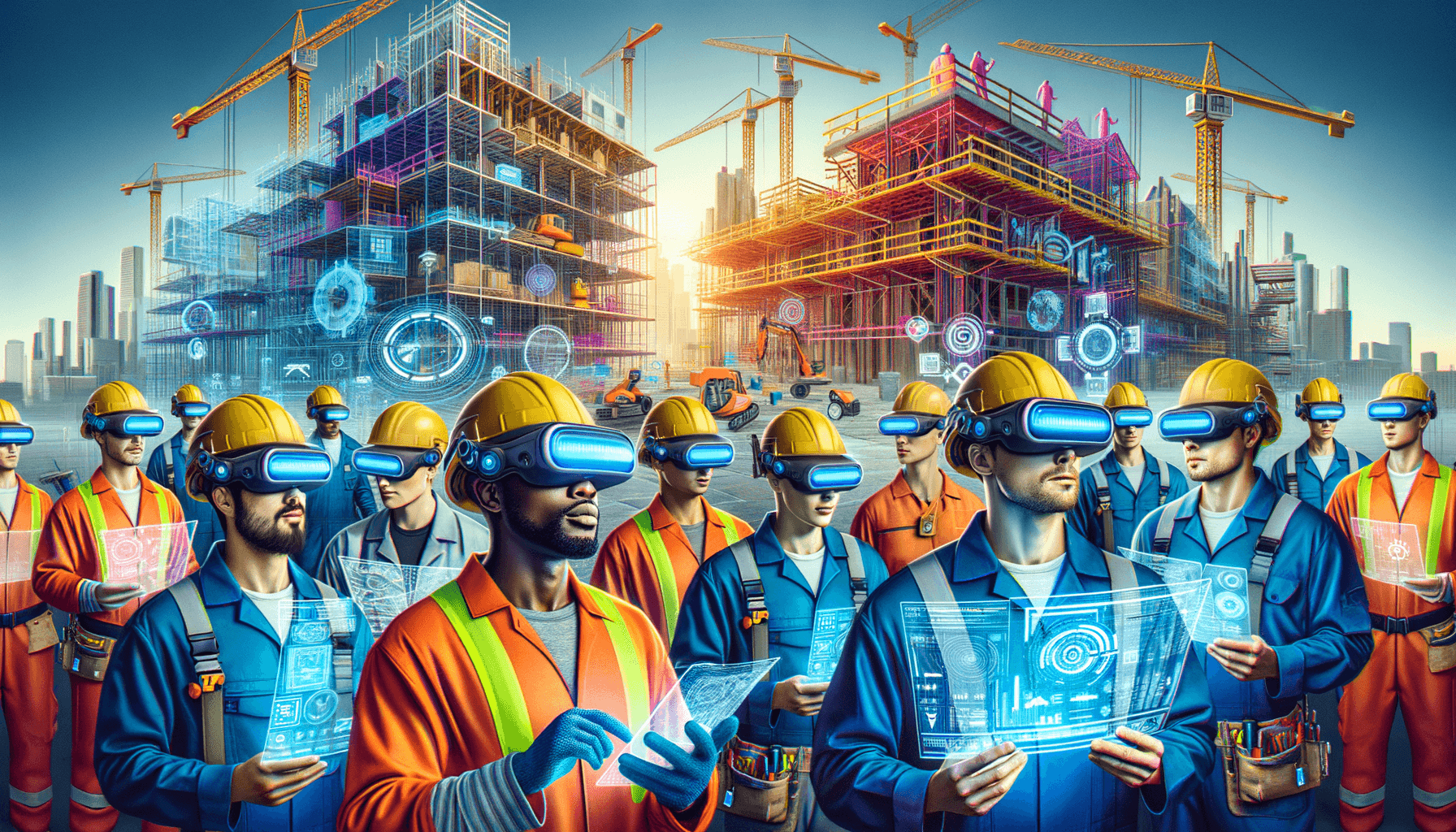
How AR & VR Are Transforming The Sales Process in the Construction Industry
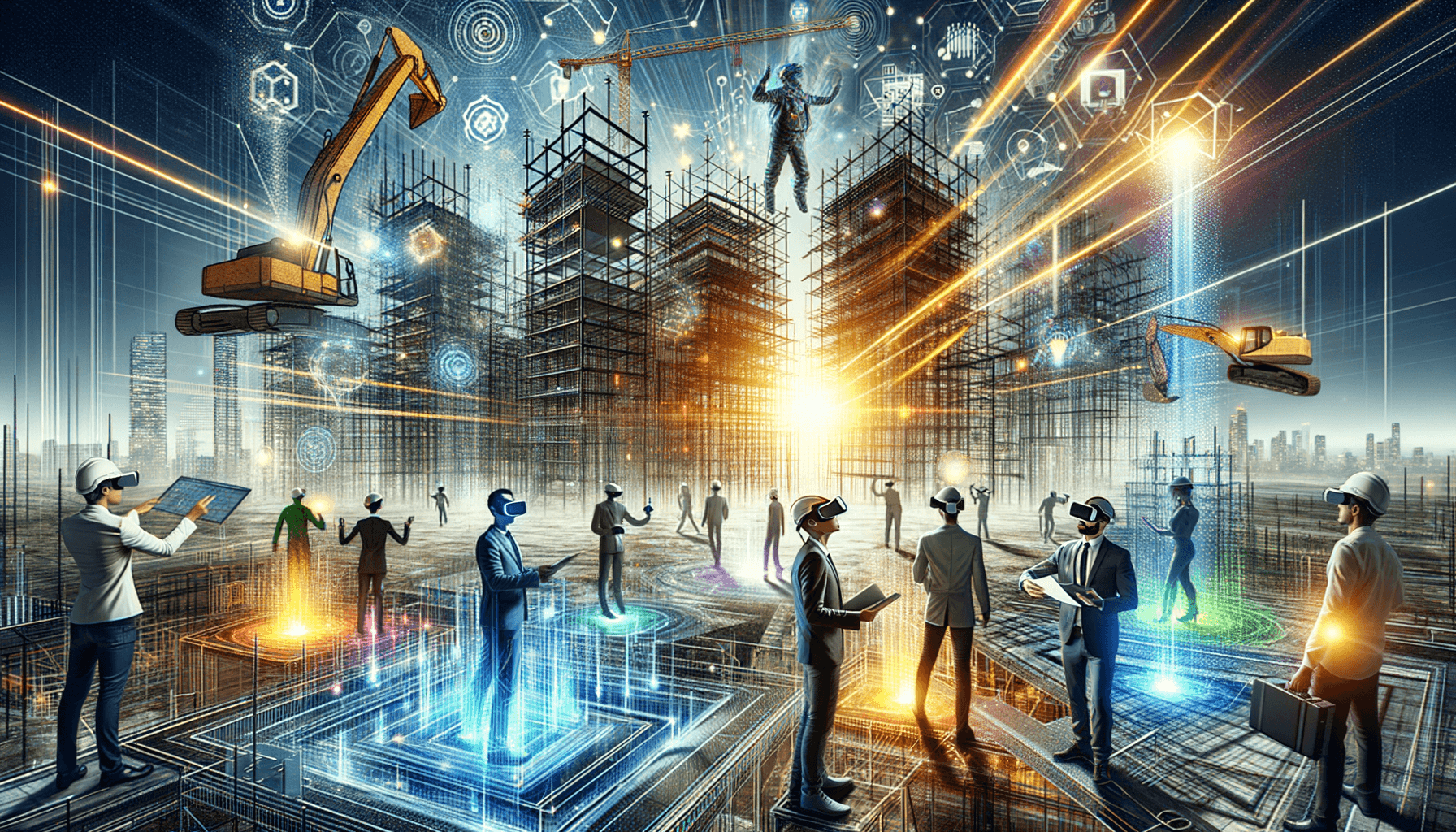
Virtual Reality’s Role in Construction Safety and Employee Retention
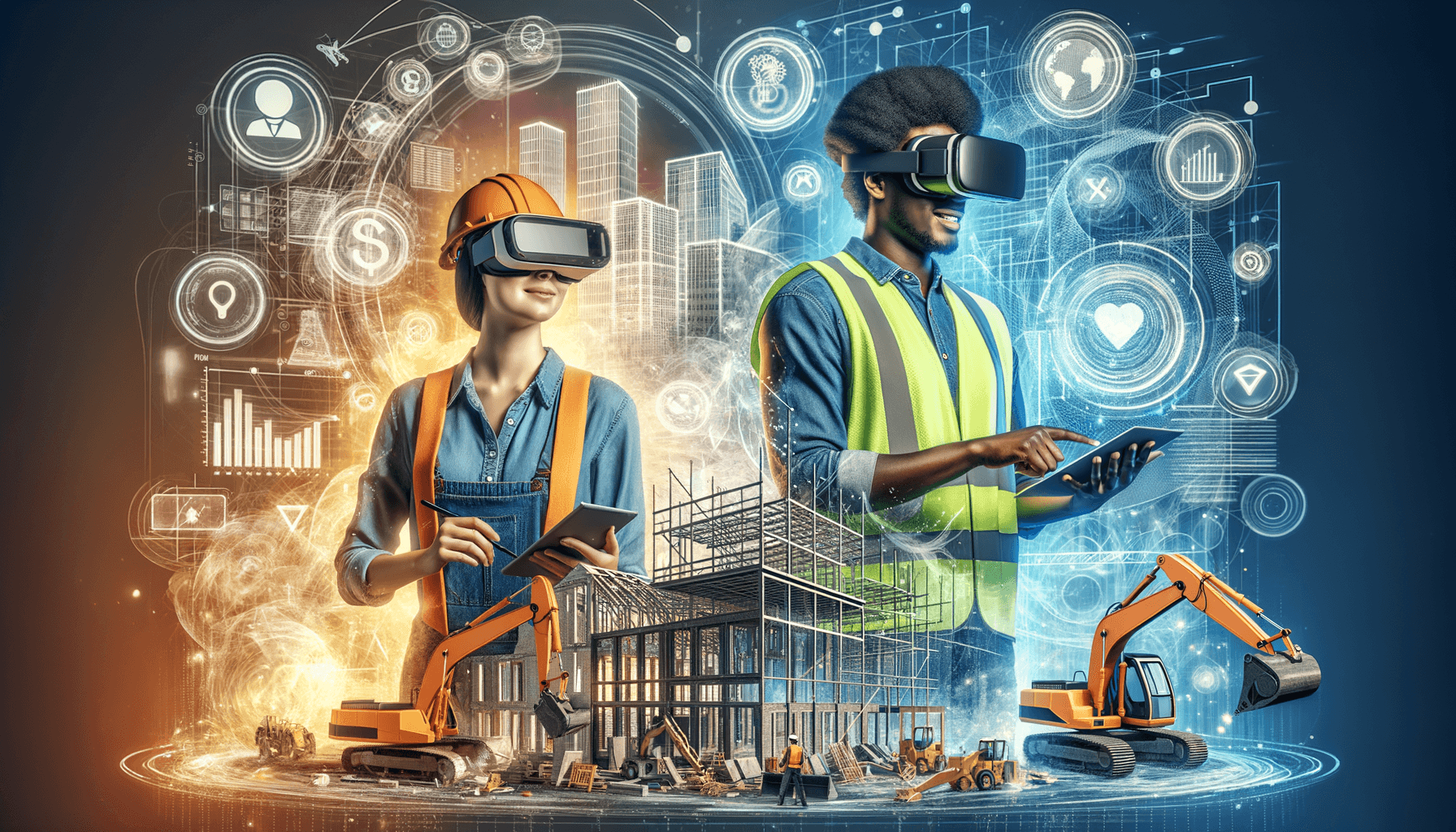
Maximizing Construction Efficiency with Augmented Reality Integration
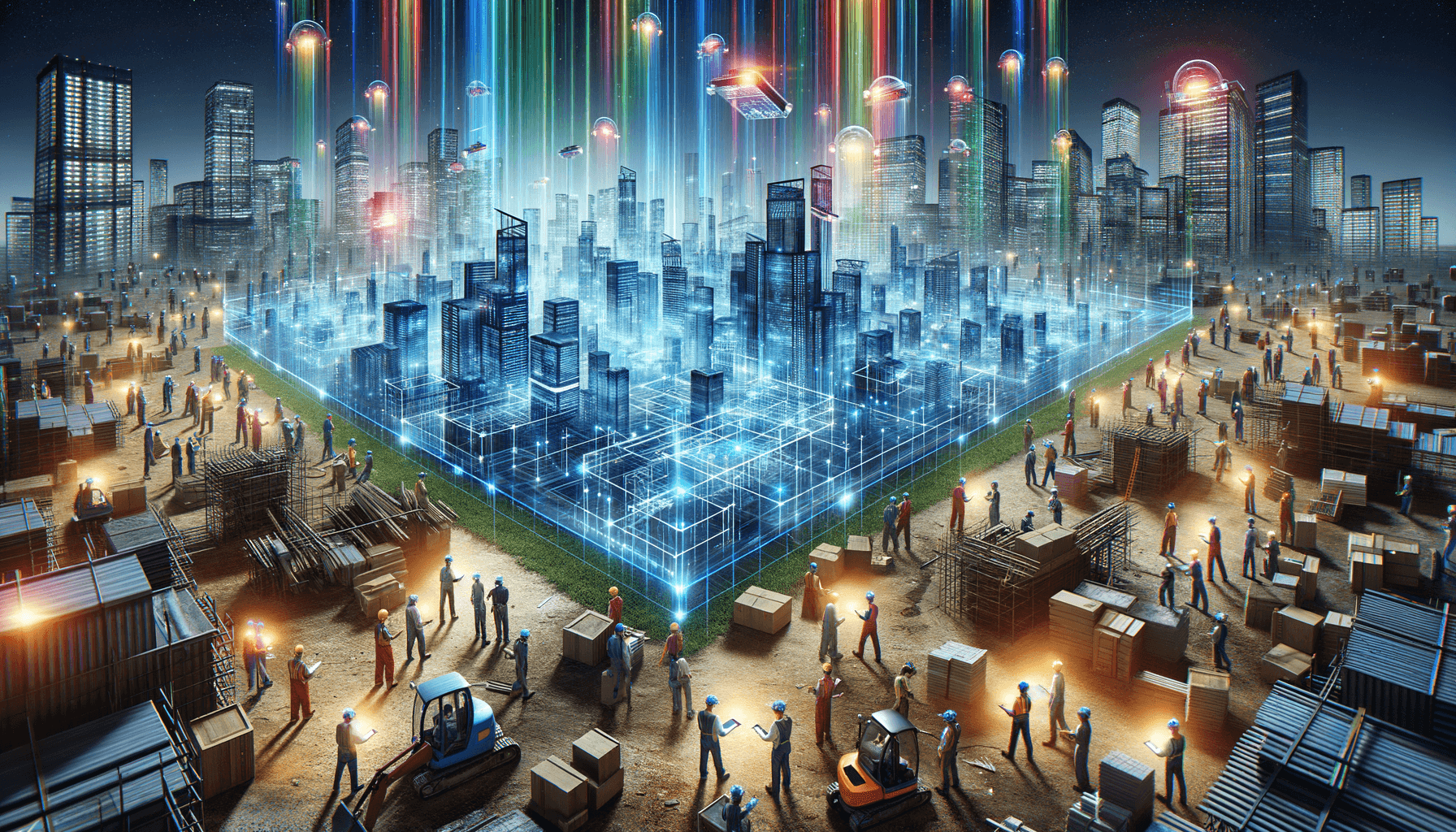
VR & AR: Enhancing Safety and Efficiency in Construction
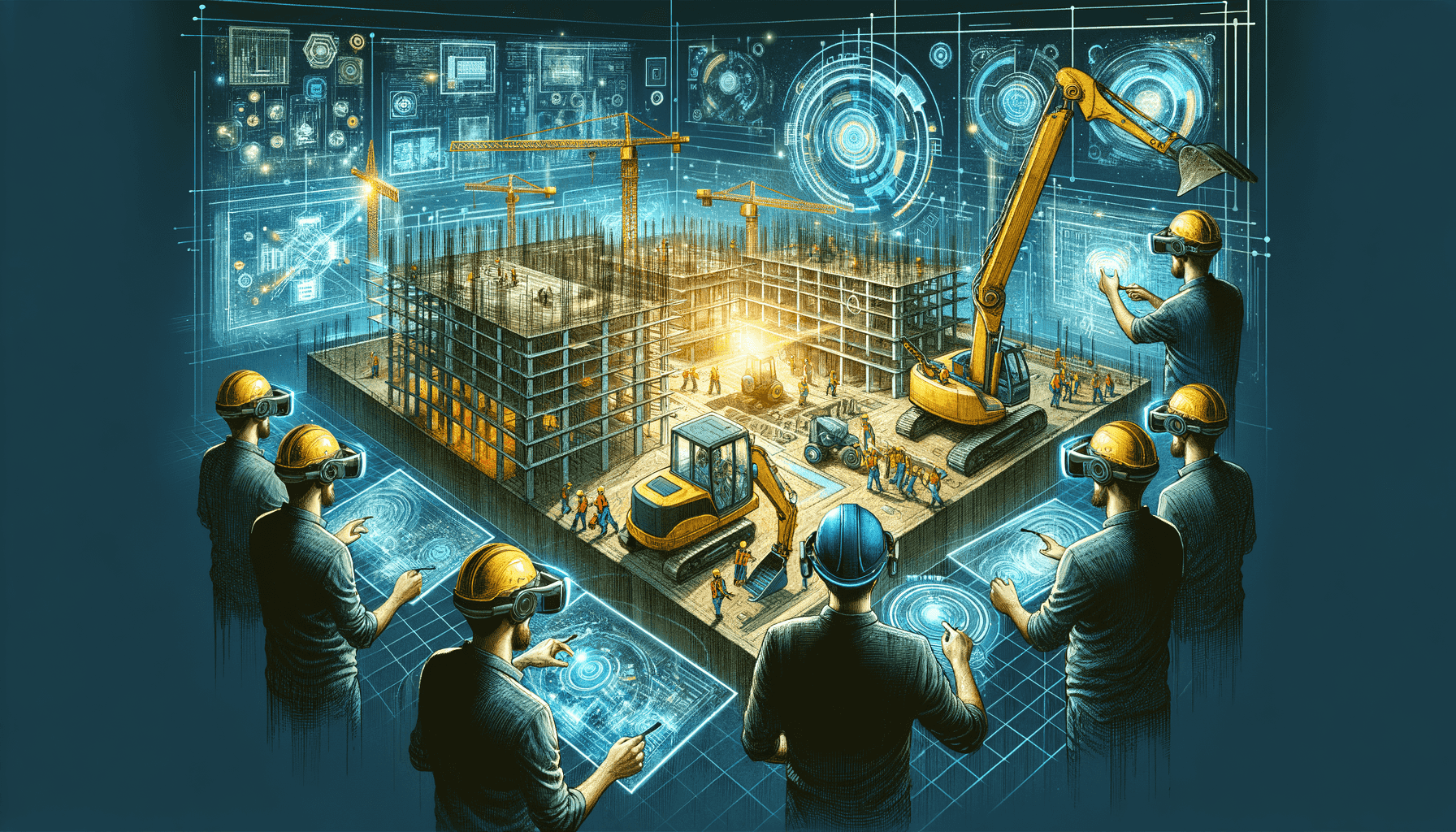

GRAVITY JACK MINI BLOGS
Augmented Reality Tools For Project Planning
In the world of construction, meticulous planning is the cornerstone (pun intended) of successful projects. From initial design concepts to project timelines and resource allocation, every decision made during the planning phase can have a significant impact on the outcome of a build. Augmented reality (AR) technology is rapidly transforming the way construction projects are planned and executed, offering unprecedented levels of precision, efficiency, and innovation. Let's delve into how AR is revolutionizing the construction planning process and paving the way for more seamless and successful builds.
Enhanced Design Visualization
Augmented reality offers groundbreaking new solutions to the way architects and designers conceptualize and visualize construction projects. By overlaying digital models onto physical environments, AR allows stakeholders to see proposed designs in real-world contexts, enabling them to make more informed decisions about layout, aesthetics, and functionality. At the same time, AR makes implementing feedback easier than ever, enabling designers to make changes quickly and seamlessly. With AR, planners can explore different design options, experiment with materials and finishes, and assess the impact of design choices on the surrounding environment—all before breaking ground.
Streamlined Site Surveys
Traditional site surveys can be time-consuming and labor-intensive, often requiring qualified teams to manually measure and document site conditions. Augmented reality simplifies this process by providing accurate, real-time data capture capabilities. Using AR-enabled devices, planners can conduct virtual site surveys, capturing precise measurements and dimensions with a single scan. This streamlined approach not only saves time but also reduces the risk of errors and discrepancies, ensuring that construction plans align seamlessly with site conditions.
Efficient Resource Management
Effective resource management is essential for keeping construction projects on track and within budget. Augmented reality offers valuable tools for optimizing resource allocation and utilization during the planning phase. By integrating AR into project management software, planners can visualize and analyze resource requirements in real-time, identifying potential bottlenecks and inefficiencies before they arise. This proactive approach allows construction teams to allocate resources more effectively, minimize waste, and maximize productivity throughout the build. Planning methods versus augmented reality (AR)-enabled planning methods. On one side, depict a scene with workers using paper blueprints, measuring tools, and physical models to plan a construction project. On the other side, illustrate a similar scene but with workers using AR glasses or devices to view digital blueprints, overlay virtual components onto the real-world environment, and collaborate more efficiently.
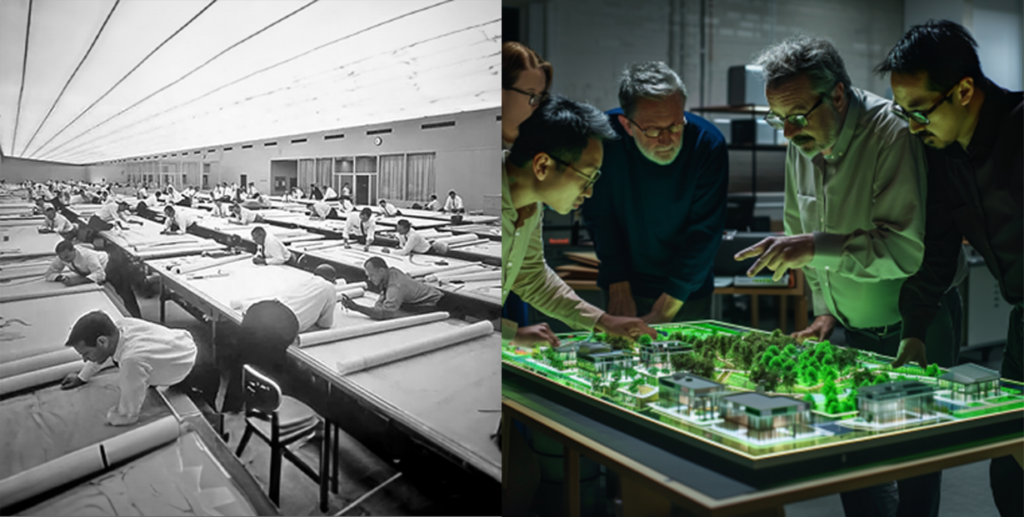
Improved Collaboration and Communication
Successful construction projects depend on clear and effective communication among all stakeholders involved. Augmented reality facilitates collaboration by providing a shared platform for visualizing and discussing project plans in immersive 3D environments. Whether stakeholders are located on-site or off-site, AR enables them to virtually explore designs, provide feedback, and make decisions collaboratively. This enhanced communication fosters greater transparency, alignment, and accountability among project teams, leading to smoother project execution and higher-quality outcomes.
Realistic Project Simulations
Augmented reality empowers planners to simulate construction scenarios and visualize potential challenges before they occur. By creating realistic virtual environments, AR allows planners to test different construction methodologies, assess site logistics, and identify potential conflicts or safety hazards. This proactive approach enables planners to anticipate and address issues early in the planning process, minimizing disruptions and delays during construction. Additionally, AR simulations can be used to train construction teams on site-specific procedures and protocols, ensuring that projects proceed safely and efficiently from start to finish.

GRAVITY JACK MINI BLOGS
Augmented Reality: Managing Equipment Cost in Construction
Augmented Reality Enhances Construction Maintenance Efficiency
AR Market Expansion Signals New Norms
The global augmented reality market, as reported by Grand View Research, is on a brisk ascent, with projections hitting a staggering USD 340.16 billion by 2028. This 43.8% CAGR from 2021 to 2028 underscores a significant paradigm shift particularly widespread in industries such as construction. Here, AR has been transforming maintenance workflows, enabling companies to finesse the balance between operational efficiency and cost-effectiveness.
Construction's traditionally high expenditure on equipment maintenance can be steeply reduced with AR's intervention. Real-time access to diagnostic data, manuals, and repair instructions directly within a technician’s line of sight not only shaves off unnecessary downtime but also dramatically diminishes labor expenses incurred through manual document retrieval.
AR in Practice: Notable Industry Leaders and Their Tools
Trailblazers like Microsoft with the HoloLens have set the bar high for an enhanced visual experience during maintenance tasks, providing technicians with helpful interactive imagery. Heavy-hitter Caterpillar leverages AR to slash downtime and boost the efficiency of intricate machinery troubleshooting. Meanwhile, Trimble has been instrumental in offering AR tools that aid construction professionals in visualizing and meticulously planning their workflows.
Our company, as a seasoned player in the AR space, understands how crucial these tools are in actualizing operational precision. With our expertise, we extend similar capabilities to our clients, ensuring responsive, effective, and technologically tailored solutions for their unique maintenance challenges.
Real-World Efficiencies: AR at Work
Concrete success stories, such as GE Renewable Energy’s hydroelectric unit capitalizing on HoloLens for a 15% reduction in labor time, exemplify AR’s tangible benefits. Thyssenkrupp's inventive use of AR has revolutionized elevator repair, shrinking service call duration by fourfold. These instances validate AR as not just a promising concept but as an essential, profit-maximizing asset in modern maintenance operations.
We imbue these learnings into our solutions, meticulously formulating AR experiences to dovetail with the functional demands of the construction industry. Our focus is on providing high-fidelity, accessible, and intuitive AR tools that enable technicians to operate deftly—an unequivocal advantage in the face of increasing complexity in machinery and infrastructure projects.
Ensuring Consistent Quality & Extending Equipment Lifespan
The incorporation of AR fosters a maintenance workflow that is less prone to error and more aligned with optimal performance standards. Effective AR integration has the dual benefit of maintaining consistent quality in maintenance tasks while simultaneously stretching the lifespan of valuable equipment, which in turn safeguards against costly damages.
As the vanguard in the AR innovation field, we are well-equipped to facilitate this level of precision and reliability. Our services are designed to mold seamlessly into existing workflow structures, with the versatility to offer support for a wide variety of equipment and tasks—ensuring our clients are not only meeting but exceeding industry benchmarks.
The Gravity Jack Advantage
In a landscape where the integration of AR has become synonymous with strategic advancement and, ultimately, profitability, our dedication to surpassing the expectations of the construction industry stands firm. At Gravity Jack, we pride ourselves on pioneering custom AR solutions that align with the macro trends of market growth and the nuanced needs of individual companies.
We invite you to explore how our AR services can play an integral role in refining your maintenance workflows. Contact us for a closer look at how we can craft a solution that not only fits your present needs but also propels you forward in step with the rapid evolution of AR technology. Together, let's build futures where the real and the digital converge for unparalleled efficiency and growth.

GRAVITY JACK MINI BLOGS
How AR & VR Are Transforming The Sales Process in the Construction Industry
Enhancing Client Engagement in Construction: VR and AR Solutions by Gravity Jack
Transformative Tech in the Construction Sales Cycle
In the ever-evolving landscape of the construction industry, Virtual Reality (VR) and Augmented Reality (AR) technologies are revolutionizing how construction businesses connect with their clients. By integrating immersive experiences throughout the sales cycle, the potential for enhanced customer engagement and informed decision-making has skyrocketed. At Gravity Jack, our pioneering AR and VR solutions are at the forefront of this transformation, providing an invaluable asset to construction companies aiming to not only meet but exceed their client's expectations.
The Rise of Immersive Visualization
The benefits of utilizing VR and AR in construction manifest primarily through immersive project visualization. VR allows clients to virtually wander through their future projects, experiencing the space and design as if they were standing within the finished structure. This high level of detail and realism aids in solidifying client's decisions and reduces hesitancy caused by uncertainties regarding the final outcome.
Complementing VR, AR facilitates a unique overlay of digital models onto a real-world environment. Clients can visualize their projects’ integration with existing landscapes or structures, ensuring the proposed design harmonizes with their vision. At Gravity Jack, our cutting-edge technology allows for these digital overlays to be precise and realistic, thus empowering clients to make informed decisions with confidence.
Market Dynamics and Growth
The construction sector's adoption of these technologies is not just a trend, but a growing sector with substantial demand. With a projected compound annual growth rate of 24.4% from 2020 to 2027, the integration of VR and AR is rapidly becoming an industry standard. This growth is a reaction to the undeniable advantages these technologies offer: amplified investments, enhanced planning and design stages, and a significant positive impact on the infrastructure's life cycle.
Success Stories and Innovations from Industry Leaders
Our experience at Gravity Jack shows that VR and AR are not fleeting phenomena—in fact, industry leaders like Trimble and AECOM have solidified their use in their processes, from visualization to on-site task execution. Hyundai Engineering's use of VR for constructing virtual models and DAQRI's collaboration with Autodesk to incorporate AR into BIM software are but a few examples of how these technologies are becoming the bedrock of operational success in the construction industry.
Gravity Jack's Expertise: Your Competitive Advantage
Why choose Gravity Jack as your partner in incorporating VR and AR into your construction processes? Our tailored solutions are designed to align precisely with each client's specific needs, ensuring seamless integration into their sales cycle. Our capacity to develop innovative applications that function effortlessly on various devices extends the reach of these technologies, bringing the benefits of VR and AR to a broader clientele.
A Call to Action for Construction Innovators
Imagine a future where every client is fully immersed in their project before a single brick is laid. This future is not just imaginable; it's achievable today with Gravity Jack's VR and AR solutions. If you're ready to revolutionize your sales cycle and offer your clients unparalleled engagement, reach out to us. Our team is equipped to bring your projects to life in the virtual realm, enhancing the clarity, confidence, and satisfaction of your clients.
Visit Gravity Jack to learn how we can support your ventures with the power of VR and AR. Let's build a new reality for construction together.

GRAVITY JACK MINI BLOGS
Virtual Reality’s Role in Construction Safety and Employee Retention
Virtual Reality (VR) in the Construction Sector: A Game Changer in Safety and Employee Retention
The Rise of Virtual Reality in Construction
The integration of Virtual Reality (VR) into the construction industry has been pivotal in reshaping traditional approaches towards safety and workforce management. Current market insights reveal that VR is no longer just an innovative concept but a practical tool to enhance occupational safety and bolster employee engagement. Within a period spanning from 2020 to 2026, the deployment of VR in construction is anticipated to grow from $1.4 billion to an impressive $4.7 billion, with a compound annual growth rate of 17.3%. This remarkable growth is indicative of the pivotal roles VR plays in providing simulations and visualizations for improved construction practices.
Cost Savings and Injury Prevention through VR
In a sector that is constantly seeking ways to optimize costs and mitigate risks, VR technology offers compelling solutions. By employing hazard simulations, construction firms are now equipped to slash training and safety expenditures by up to 20%. The use of VR for safety training not only cuts costs but also plays a significant role in reducing workplace accidents. A safe workforce is a productive workforce, and through VR, workers can navigate through realistic safety scenarios without exposure to actual hazards.
Pioneering Firms in VR and Their Impact
Several industry-leading companies are making remarkable strides in the application of VR within construction. Firms like EON Reality specialize in VR safety training solutions, achieving a notable decrease of up to 20% in workplace accidents for their client firms. STRIVR's innovative workplace simulations are instrumental in improving staff retention, highlighting VR's role in fostering an engaged and committed workforce. IrisVR's proficiency in project visualization not only enhances project planning but also plays a crucial role in preventing costly errors.
Case Studies: VR Making a Difference in the Field
The practical benefits of VR technology are exemplified by top-tier construction giants. For instance, Skanska employed VR to virtually inspect their building designs, leading to a reduction of errors and improved safety and productivity on job sites. Similarly, McCarthy Building Companies, Inc. experienced a considerable drop in safety incidents following their collaboration with STRIVR for VR safety training. These real-world applications serve as testaments to the effectiveness of VR technology in enhancing construction operations.
Gravity Jack: Your Premier VR Solution Provider in Construction
At Gravity Jack, we pride ourselves as leaders in the Augmented and Virtual Reality industries, providing cutting-edge solutions that have bolstered safety and employee retention in construction. Our bespoke VR experiences enable workers to navigate and learn from hazardous scenarios in controlled, risk-free settings. By incorporating detailed training modules, we create engaging learning experiences that ensure safety protocols are not just taught but internalized and accurately applied in real-world situations.
With the goal of contributing to safer work environments and more efficient project outcomes, our services reflect the growing market value of VR and align with the technological investments by key players in the industry. We understand that superior project visualization and interactive training are essential components for firms aspiring to reduce operational costs, minimize workplace injuries, and improve employee retention.
Elevating Construction Outcomes with Gravity Jack
Virtual Reality in construction goes beyond novelty—it's about tangible benefits that multiply as the technology evolves. Our commitment is to continue to innovate and support construction companies in their journey toward adopting VR, ensuring cost savings, fewer injuries, enhanced productivity, and superior project outcomes. We invite companies aiming to pioneer in safety and efficiency to consider Gravity Jack's expertise in the realm of Virtual Reality.
We understand that adopting new technologies can be a significant pivot, but with our extensive experience and proven track record, you can be assured that our VR solutions are tailored to meet your company's unique challenges and goals. Reach out to us, and let us help you shape a secure and efficient future in the construction sector.

GRAVITY JACK MINI BLOGS
Maximizing Construction Efficiency with Augmented Reality Integration
Maximizing Construction Efficiency with Augmented Reality Integration
Construction sites are complex environments buzzing with activity, plans, and workers striving towards a single goal: turning a blueprint into reality. Augmented Reality (AR) technology has emerged as a powerful tool to enhance this process, bridging the gap between digital documentation and the physical job site. Through AR, digital information is not just an abstract concept viewed on screens but a tangible part of the construction landscape. Our company, Gravity Jack, stands at the forefront of this industry, committed to integrating AR solutions that revolutionize construction practices.
The Growth and Impact of AR in Construction
The expansion of AR in the construction industry is a testament to its effectiveness. With a predicted jump from $1.2 billion in 2020 to $7.7 billion by 2026, AR's staggering compound annual growth rate of 35.1% highlights its indispensability in modern construction. Adoption rates are mirroring this growth, with nearly a quarter of construction firms now leveraging AR to enhance their processes. These figures signify a rapidly transforming landscape, with Gravity Jack poised to provide cutting-edge AR solutions that meet this demand.
Industry pioneers like Trimble Inc, DAQRI, and Bentley Systems have demonstrated the versatility and benefits of AR in construction. From advanced outdoor AR solutions such as Trimble SiteVision to the immersive DAQRI Smart Helmet, the industry is harnessing AR for more accurate, efficient, and safe project execution. Our team at Gravity Jack similarly delivers systems that empower field workers to visualize and access comprehensive project information like never before.
Streamlining On-Site Operations
AR's ability to superimpose critical data onto a physical location, such as complex MEP systems or architectural elements, is revolutionizing site operations. It allows workers to precisely visualize the project's subtle intricacies, reducing misinterpretations that can lead to errors or delays. At Gravity Jack, we provide AR solutions that enable real-time access to such detailed project information. Our technology helps to preemptively identify and resolve potential conflicts between digital models and the actual construction site, streamlining workflows and enhancing the effectiveness of each crew member.
Moreover, real-world applications have provided undeniable evidence of AR's positive impact. Companies like Granite Construction and Balfour Beatty have effectively integrated AR to improve productivity and worker safety. By using AR to visualize 'safety zones,' for instance, workers are better informed of potential hazards, which promotes precautionary measures. These applications underscore the practical, on-the-ground benefits of AR that Gravity Jack's solutions similarly aim to deliver.
Gravity Jack’s Role in Advancing AR in Construction
With an extensive background in crafting immersive AR experiences, Gravity Jack is uniquely equipped to tailor solutions that align with each construction project's specific needs. Our diverse range of services encompasses different platforms, including mobile phones, tablets, VR devices, and web AR. Our pricing models are as varied as our solutions, ensuring affordability without compromising the depth of creative direction and technical innovation required in such complex implementations.
Our mission is to not just develop technology, but to craft a synergy between digital potential and physical reality. As construction projects increasingly rely on precise, timely information, our AR solutions serve as a conduit through which data flows seamlessly to enhance decision-making, safety, and efficiency on the job site.
The Future Is Built with Augmented Reality
The realm of construction is witnessing a fundamental shift towards integrating digital and physical worlds. This transformative trend is not a fleeting moment but a sustained move towards smarter, more efficient building practices. As Gravity Jack leads the way in adopting and deploying AR technologies, we invite industry professionals to explore the profound advantages our AR solutions can offer.
Our team is committed to enabling your crews with the tools they need to perform at their peak, backed by the assurance of modern technology that minimizes errors and maximizes success. If you're looking to enhance your project outcomes and streamline your construction processes, consider our AR technology solutions. We invite you to connect with us to discover how our expertise can bring your construction projects into the future, today.
In the ever-evolving world of construction, where precision and efficiency are paramount, AR is not just an option—it is becoming a necessity. It's time to take your construction practices to the next level with Gravity Jack's AR integration solutions.

GRAVITY JACK MINI BLOGS
VR & AR: Enhancing Safety and Efficiency in Construction
VR and AR: Reshaping the Construction Industry for Enhanced Safety and Efficiency
The construction sector is undergoing a digital transformation, and at the helm of this change are Virtual Reality (VR) and Augmented Reality (AR) technologies. As the oldest augmented reality company in the United States, we at Gravity Jack are ideally positioned to facilitate this shift with our extensive experience and innovative solutions. Our focus on integrating immersive technologies into construction promises substantial benefits in worker safety and operational efficiency.
The Rise of VR/AR in Construction
In recent years, construction companies have been increasingly turning to VR and AR to foster safer work environments and streamline processes. The global market for VR in construction, which stood at USD 1.14 billion in 2018, is set to quadruple by 2026, evidencing the rapid adoption of these technologies. This shift is propelled by the urgent need to reduce safety incidents, which have shown to drop by 20% with the implementation of VR and AR. At Gravity Jack, we offer tailored VR/AR applications that cater to the unique needs of the construction industry, ensuring the safety and efficiency of your workforce.
Training with Immersive Technologies
Through VR, we create immersive training scenarios that prepare workers for potential hazards and emergency situations without exposing them to real-world risks. A notable example is Fluor Corporation, which achieved a 65% improvement in hazard recognition using VR training. At Gravity Jack, our simulations are designed to deliver similar high-impact training experiences, equipping workers with the knowledge to navigate on-site challenges effectively.
Real-Time AR Guidance for Enhanced Productivity
Our AR solutions provide instant overlays of pertinent information straight onto the physical working environment. A prime example is Caterpillar's use of AR to offer machine assembly instructions directly on-site. Similarly, we develop cutting-edge AR applications that streamline construction tasks, from assembly directions to critical alerts, thus minimizing downtime and resource wastage.
Successful Industry Implementations
Leaders in the construction industry have demonstrated the value of adopting VR and AR technologies. Bechtel and Fluor Corporation improved worker safety, while Caterpillar Inc. leveraged AR for more agile project management. At Gravity Jack, we stand ready with our technology to replicate such successes, optimizing your workflows and ensuring safer job sites.
AECOM and Bentley Systems: Paving the Way
With real-world applications of VR and AR set forth by AECOM and Bentley Systems, there is clear evidence that these technologies are invaluable in simulating environments and overlaying data visualization onto construction sites. Our services at Gravity Jack include bespoke applications that follow through on these examples, augmenting the factual world with digital enhancements to support decision-making and strategy planning.
Construction companies are not only future-proofing their operations with VR and AR but are also setting new industry benchmarks for safety, productivity, and profitability. With Gravity Jack's expertise, your venture can be at the forefront of this technological revolution.
If you are looking to integrate VR and AR into your construction projects, consider partnering with us. Our dynamic solutions are designed to address industry-specific challenges and drive your company towards greater heights in safety and efficiency. Get in touch with us to explore how we can tailor our technologies to meet your needs.
HOW CAN WE MAKE THIS PROCESS EASIER FOR YOU?
Frequently Asked Questions
Is AR or VR better for my construction project?
The choice between AR and VR depends on your project’s specific needs. AR is great for overlaying digital information onto the real world, making it ideal for tasks like on-site visualization, remote assistance, and progress tracking. VR, on the other hand, immerses users in a completely digital environment, making it ideal for design reviews, training simulations, and pre-construction walkthroughs. In your initial conversations with the Gravity Jack team, we will consider factors such as project stage, budget, and desired outcomes to determine which technology aligns best with your objectives.
What impact do AR and VR have on safety?
Both technologies have the ability to provide immersive training simulations, enabling workers to familiarize themselves with potentially hazardous environments and procedures in a controlled setting. They can also facilitate remote guidance and assistance, allowing experts to provide real-time instructions to on-site workers without physically being present, ultimately reducing the risk of accidents and injuries. Additionally, AR and VR can be used for safety inspections and risk assessments, enabling the ability to identify potential hazards and implement preventive measures before construction begins.AR specifically can overlay safety information, such as hazard warnings or equipment operating instructions, directly onto the physical environment, increasing situational awareness and minimizing the likelihood of errors.
Can AR and VR help with blueprints and the overall sales process?
AR and VR are capable of immersive experiences that allow architects and potential clients alike to visualize and interact with architectural designs in three dimensions. This helps all vested parties better understand the spatial layout, scale, and details of a project before construction begins. With AR, blueprints can be overlaid onto physical spaces, enabling on-site visualization and alignment of digital models with real-world environments. VR, on the other hand, offers fully immersive experiences where users can walk through virtual representations of buildings and spaces, providing a comprehensive understanding of design concepts.
What are some examples of how these technologies can improve efficiency?
- Supply Chain Management: Overlay digital information, such as inventory levels and delivery schedules, onto physical materials and equipment on construction sites. This real-time data visualization helps project managers optimize supply chain logistics, reduce delays, and prevent material shortages.
- Quality Control Inspections: Replicate real-world construction scenarios, allowing quality control inspectors to identify potential defects or issues before they arise in the actual construction process. This proactive approach minimizes rework, improves construction quality, and ensures adherence to project specifications.
- Equipment Maintenance and Repair: Provide technicians with interactive, step-by-step instructions overlaid onto machinery and equipment, guiding them through maintenance or repair procedures. This reduces downtime, improves equipment reliability, and extends asset lifespan.
How can AR and VR technologies enhance collaboration among construction project teams?
AR and VR technologies enhance collaboration among construction project teams by enabling remote communication, visualizing design concepts, and facilitating immersive design reviews. They streamline decision-making by providing intuitive visual communication tools and supporting clash detection for early issue resolution. Additionally, VR-based training simulations foster skills development and team cohesion, while immersive client experiences improve engagement and ensure project requirements are met accurately.



